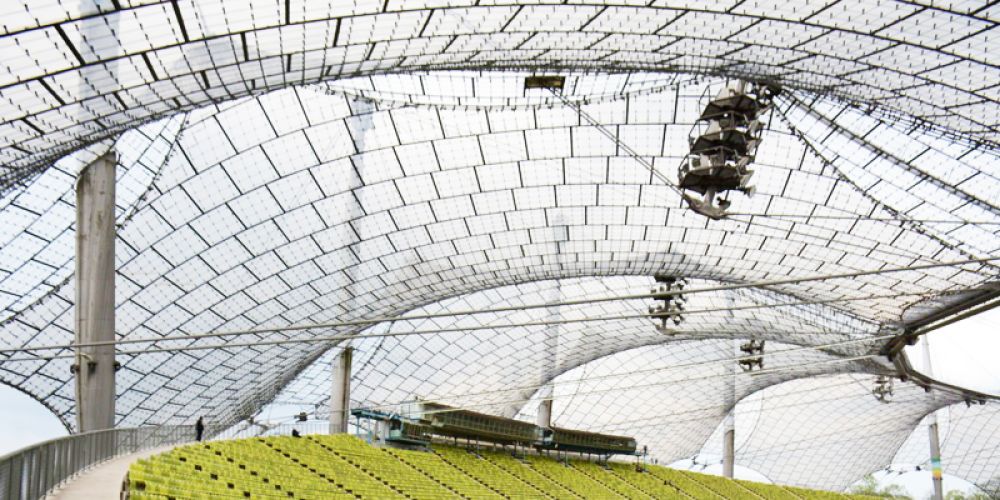
1. Wind-resistant design: a mechanical strategy of using softness to overcome hardness
Wind tunnel simulation and morphology optimization
Aerodynamic shape design: Reduce wind resistance through streamlined surfaces, such as the sail-shaped membrane structure of the Burj Al Arab in Dubai, whose inclination angle and curvature of the surface are optimized through wind tunnel experiments to reduce the wind pressure coefficient.
Zoned wind-resistant strategy: Divide the membrane surface into different wind pressure zones, use high-strength membrane materials (such as PTFE-coated glass fiber) to strengthen the windward side, and use lightweight membrane materials (such as ETFE) to reduce the deadweight on the leeward side.
Prestress control and dynamic response
Initial prestress: Apply prestress through tensioning rigging to keep the membrane surface taut in a static wind state. For example, Qingdao Yizhong Stadium uses 60 conical membrane units, forming a stable system through inner ring cables and outer ring steel trusses.
Dynamic adjustment mechanism: Equipped with tension sensors to monitor prestress in real time. When the wind load exceeds the design value, the membrane surface disperses the pressure through elastic deformation to avoid local damage.
2. Earthquake-resistant design: flexible wisdom of energy dissipation
Structural redundancy and flexible connection
Multi-path force transmission: rigid structures such as steel cables and steel trusses are used to form a composite system with membrane materials. Energy is dissipated through flexible connections (such as sliding bearings and dampers) during earthquakes. For example, the tensile membrane structure in the entrance hall of the Hongdao International Conference and Exhibition Center allows the membrane structure to undergo horizontal displacement during earthquakes through sliding bearings to avoid rigid damage.
Material ductility and self-reset
Memory alloy metal: some membrane materials (such as ETFE membrane) can return to their original state after deformation, such as the ETFE membrane structure of the Plasencia Auditorium and Conference Center, which realizes material self-repair through molecular chain recombination technology.
3. Engineering practice: safety verification in extreme environments
Typhoon test: Shanghai 80,000-seat Stadium
After experiencing a 12-level typhoon, the membrane structure only showed slight deformation, thanks to the coordinated work of prestressed steel cables and membrane materials, forming a "prestress-deformation-recovery" closed loop.
Earthquake simulation experiment
In a simulated earthquake, a membrane structure building in Japan dispersed energy through the sliding mechanism of steel cables to avoid local stress concentration, verifying the feasibility of the "flexible energy dissipation" theory.
4. Future trends: smart materials and adaptive structures
4D printed membrane materials
By embedding shape memory alloy wires, the membrane structure automatically restores its shape after being damaged. For example, the "self-healing membrane" developed by MIT has been applied on a small scale.
AI-driven prestressed control
Combining sensors and machine learning algorithms, the tension of steel cables is adjusted in real time. For example, a German project has achieved dynamic response optimization under wind load.
Biomimetic design
By drawing on the microstructure of the lotus leaf surface, super-hydrophobic and self-cleaning membrane materials are developed to reduce maintenance costs in extreme weather.